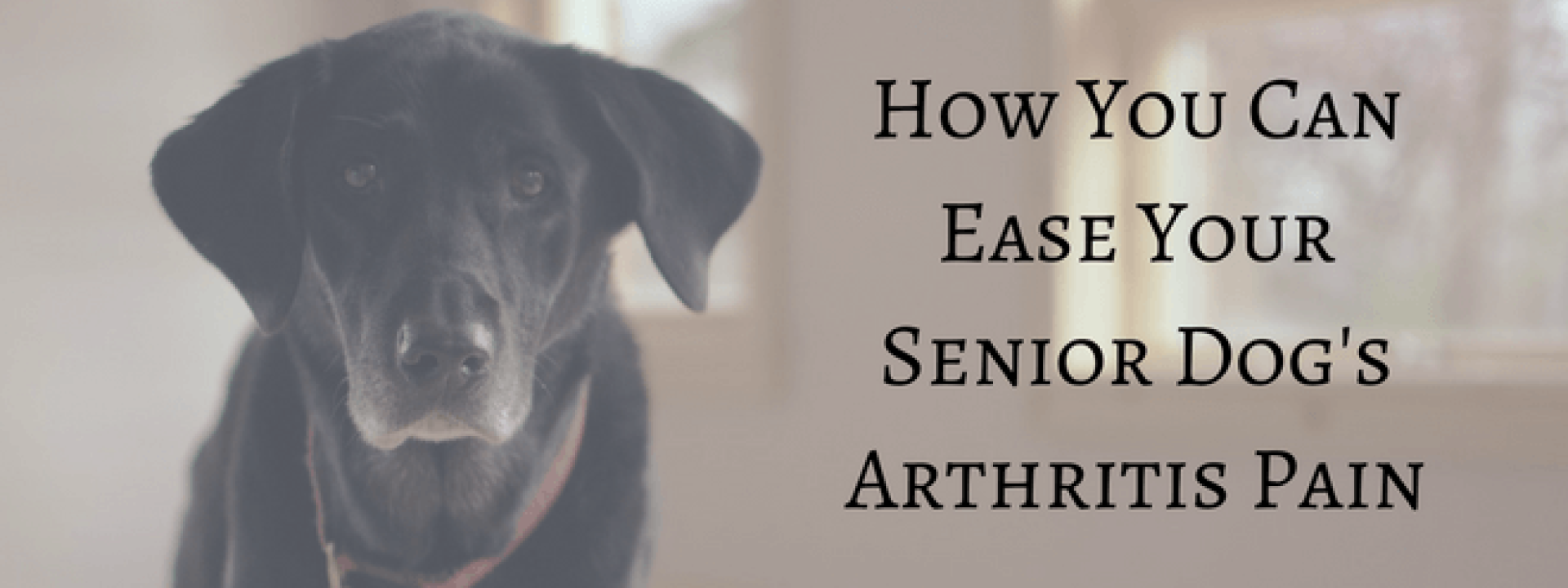You recognize the signs. The slow hobble to greet you at the door where once your dog practically leaped at the chance to put his paws on you. The laborious clamber from a resting position to standing.
These are clear signs of arthritis pain and it affects between 60 – 70% of dogs.
Other signs include limping, reluctance to go up and down stairs and generally, a lethargy where you once had an active pooch.
When you think about it, it’s not surprising that arthritis pain slows down even the most enthusiastic dog greeting. After all, it’s condition where the cartilage (cushioning) has worn away and now your dog experiences bone grinding against bone when he gets up. No wonder so many of those movements look less than graceful!
Why there’s no “cure” for arthritis pain, there are treatment plans you and your veterinarian can employ to ease the pain.
Of course, if you’re like most pet lovers, you may wonder what causes arthritis and if it’s a natural extension of old age? In other words, what brings this painful condition on in the first place?
First, arthritis is often caused by a ligament damage that hasn’t healed properly. Have you ever seen a dog go airborne for a frisbee and then have a rough landing? That rough landing can have consequences later in life.
Then, certain breeds are more predisposed to arthritis than others. Labs, German Shepherds, Golden Retrievers, these larger breeds are more prone to developing joint problems like arthritis. They also happen to be the breeds who are most likely to lunge after those frisbees in their puppyhood….
But what about the dogs that have never been especially active and who might be smaller? Well, arthritis can and does affect many dogs and we don’t always know all the reasons why.
What we do know is that arthritis is a condition that causes the joints to swell. As mentioned earlier, the cartilage has worn away so the joint bone rubs against the socket bone. Plus, the bone develops little outgrowths. It’s a painful condition.
So what’s a pet lover to do?
Ways to Ease Your Senior Dog’s Arthritis Pain
Exercise - You might not think that walking your dog is a great way to ease arthritic pain. Especially not when your dog seems to hobble. We’re not suggesting marathon hikes of course, but moderate and gentle exercise can reduce pain and stiffness. Moving the joints actually produces synovial fluid which lubricates your pet’s joints.
The ASPCA recommends daily walks for arthritic dogs. Not only does your pet benefit from more mobile joints but it also helps keep your dog at a healthy weight. Excess weight puts more pressure on the joints which makes it even more painful for your pet to get around. How often should you walk? Two to three 15-20 minute walks a day will be beneficial. You don’t want to overdo it.
Another low-impact activity is swimming. If your dog likes to swim and you have a place for him to do so, swimming will help increase mobility too.
Supplements and Medications – You may be able to ease your dog’s pain and slow down the progression of arthritis with supplements and medications. If your pet is in a lot of pain, your veterinarian may prescribe an anti-inflammatory for your dog. There are many prescription-strength NSAIDs (non-steroid anti-inflammatory) that may be suitable or you may find a combination of Omega 3 fish oil and glucosamine works well for your dog. Your veterinarian can make recommendations and conduct x-rays so you know how far your dog’s arthritis has progressed.
Supports – If your dog is used to leaping onto your bed or into the back of the SUV, but now you notice your dog hesitates before doing those things, it may be because it hurts to land. If your dog is behaving this way, dog ramps/steps will help your dog get to where he wants to go without risking injury.
Orthopedic beds – These offer extra cushioning and some of them have gel inserts for cooling inflamed joints. They’re also designed to help your dog go from lounging to upright easier.
Raised dog bowls – You’ve probably seen those elevated stands that hold your pet’s bowls closer to their mouths. Some dogs have arthritis in the neck or shoulder joints and it’s hard to raise and lower their heads to reach the dishes, so when you raise them you remove that concern for your pet.
Maintaining a Healthy Weight – Even a little extra weight can make a big difference when it comes to pressure on the joints. Every extra pound on your dog is equal to 20 extra pounds on you!
As you can see, while there are many ways you can ease your senior dog’s arthritis pain, it starts with paying close attention to your dog’s behavior and discussing your options with your veterinarian.
If you suspect your dog’s arthritis is getting worse, please book an appointment today to have him evaluated. That way, you can help your furry friend feel better soon.

